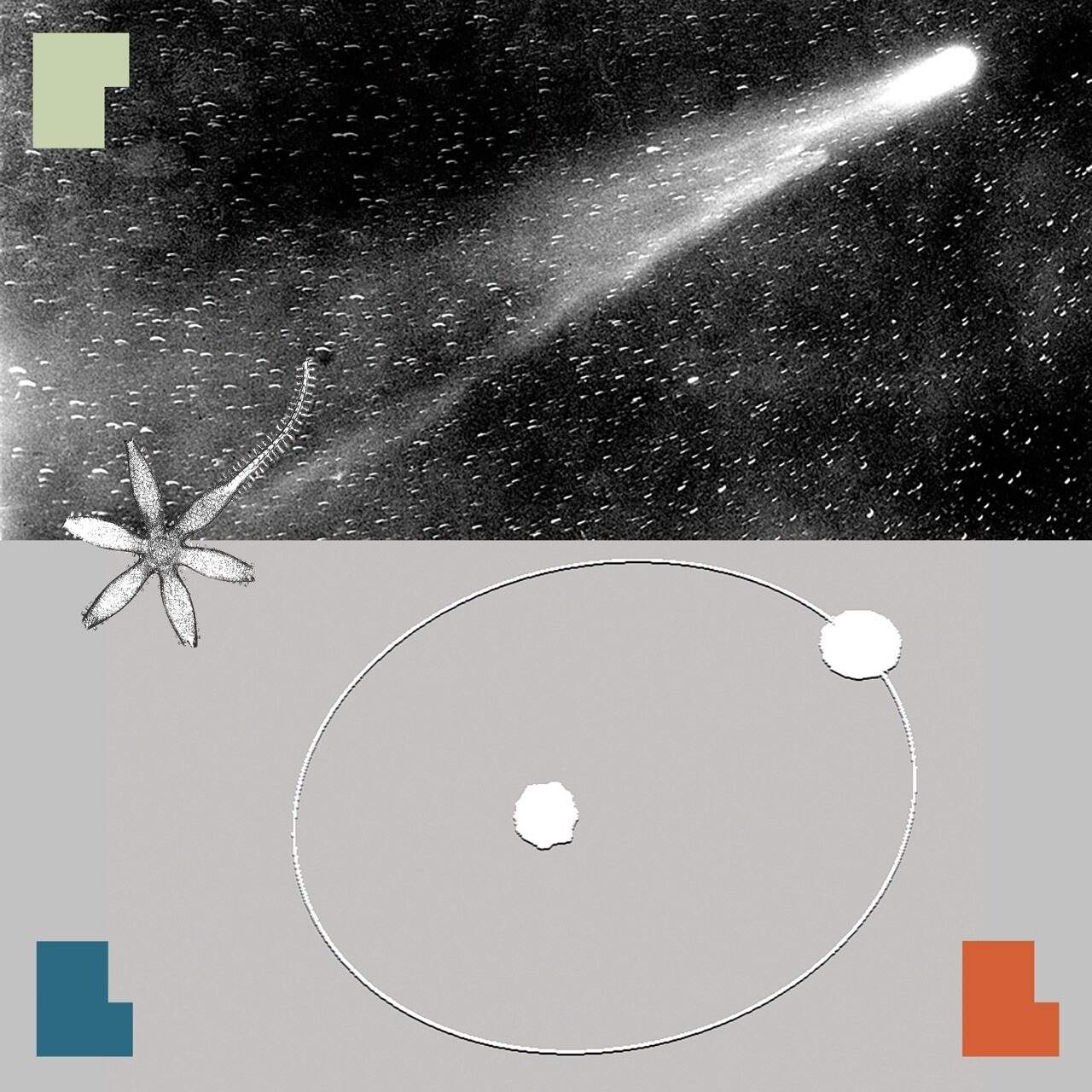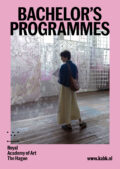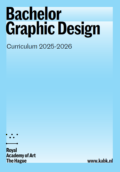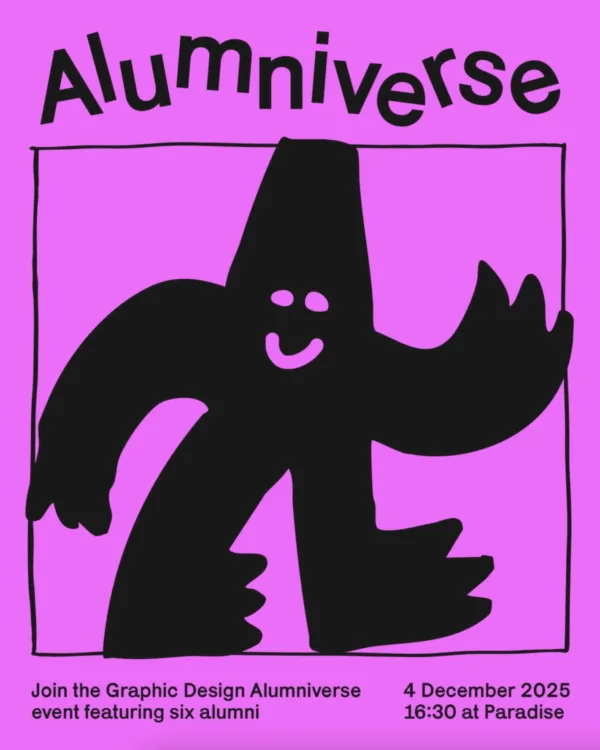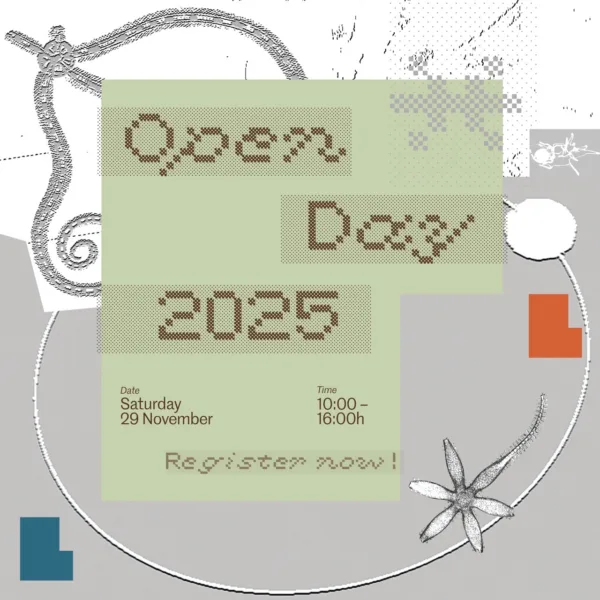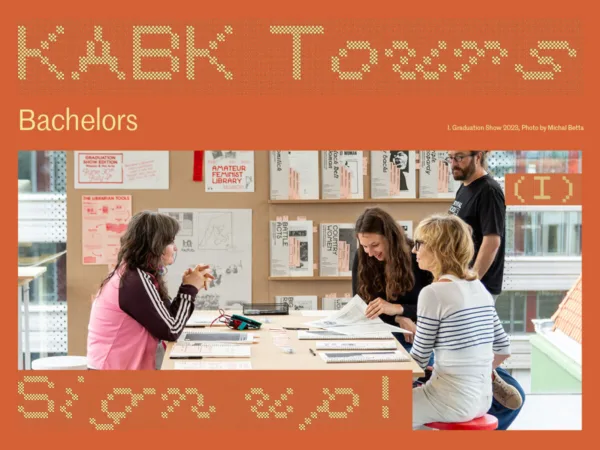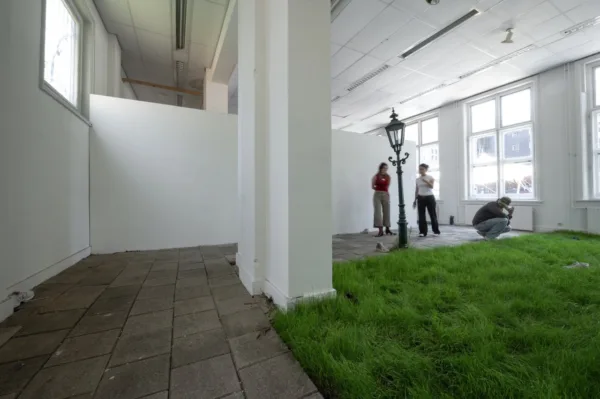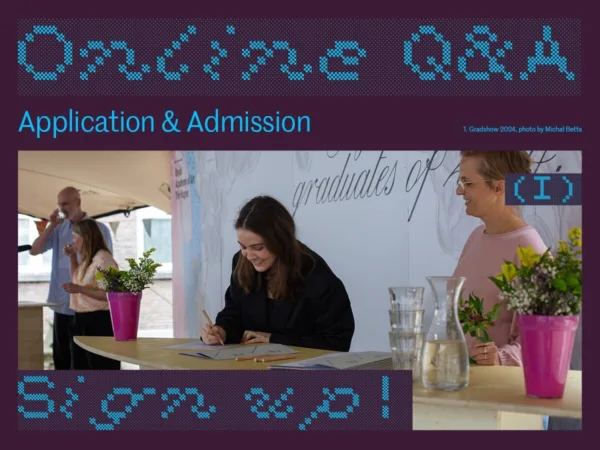Programme description
The Graphic Design bachelor's curriculum prepares you to be a critical thinker and versatile practitioner capable of developing great visual communication concepts. At the Royal Academy of Art in The Hague (KABK), students are encouraged to consider the social duties of a contemporary designer, to confront the challenges posed by the quickly expanding new-media landscape, and to explore solutions to tomorrow's concerns.
The academic programme is organised around the primary disciplines of Design, Interaction, Image, Coding, and Typography, as well as a variety of Specialization Studios such as Type Design, Design Research, Virtual Worlds and Design Practice. Our department is recognised globally for its high level of education, investigative and conceptual teaching methods, and expertise in typeface design and typography.
After completing the programme, you can pursue a career as an individual graphic designer or work for a small design studio or an established corporation. Many museums, architecture firms, non-profit organisations, media corporations, and software developers are looking for in-house designers, making the design profession highly varied.
Programme structure
The first year is an adventurous exploration of your qualities in various aspects of graphic design. These qualities are explored with challenging assignments that appeal to the student’s curiosity and creativity. Considerable emphasis is placed on open-mindedness and the joy of working. You will try out different ways of working and acquire an initial indication of your visual abilities and the value of your ideas.
In the first year, it is important to create a large body of work that provides confidence and creates resilience that will be useful during the rest of the programme.
Points of departure
- The introduction to the field is both practical and theoretical.
- The creative and intellectual development of the student is central.
- Scheduled courses are offered parallel to each other. They focus on particular aspects of the profession and the culture, both substantively and technically, and they broaden the frame of reference.
- In addition to scheduled courses, a department-wide week for all years and an Academy-wide programme for all first-year groups take place in the propaedeutic year. The first year starts with an academy wide introduction of 2 weeks, followed by an excursion with the department.
Study programme components
- Design
- Image
- Typography
- Letter Design
- Interactive Media
- Coding
- Theory
- Academy-wide programme
Courses & ECTS credits 2024-2025
| Courses Semester 1 | ECTS class A | ECTS class B |
|---|---|---|
| Design Bundel | 6 | - |
| Graphic Design | - | 6 |
| Typography | 6 | - |
| Letter Design | - | 6 |
| Image | - | 6 |
| Interactive Media Design | - | 6 |
| Coding | 6 | - |
| Theory | 5 | - |
| Collective | 1 | 1 |
| Professional Practice Skills | 1 | 1 |
| Design Safari | 1 | 1 |
| Project week | 1 | - |
| Common Ground | 3 | 3 |
| Total ECTS credits | 30 | 30 |
| Courses Semester 2 | ECTS class A | ECTS class B |
|---|---|---|
| Design Bundel | - | 6 |
| Graphic Design | 6 | - |
| Letter Design | 6 | - |
| Typography | - | 6 |
| Image | 6 | - |
| Interactive Media Design | 6 | - |
| Coding | - | 6 |
| Theory | - | 5 |
| Collective Presentation | 1 | 1 |
| Professional Practice Skills | 1 | 1 |
| Design Safari | 1 | 1 |
| Common Ground | 3 | 3 |
| Project week | - | 1 |
| Total ECTS credits | 30 | 30 |
In the second year of the graphic design program, students engage in a series of design projects aimed at deepening their understanding of the profession and enhancing their skills as designers. Students tackle assignments that span the spectrum from practical to conceptual, with both mandatory and optional tasks.
Throughout the year, students receive guidance from various tutors who specialize in distinct areas of expertise: Design, Image, Typography, or Interaction Design. In addition, students have the chance to select from courses like Type Design, Design Research, Virtual Worlds, or Design Practice, allowing them to tailor their education to their interests. Furthermore, students create their own Individual Study Trajectories, enabling them to pursue specific design directions.
The theoretical aspect of the curriculum delves into the history of graphic design, contextualizing it within cultural and societal frameworks. This historical exploration establishes meaningful connections between past design movements and the creative work of the students, fostering a more profound understanding of the field.
Moreover, students focus on refining their skills in presenting and exhibiting their work, gaining vital insights into how their designs interact with audiences and spaces. This holistic approach ensures that students in the second year of the graphic design program are well-prepared to tackle the challenges and opportunities that lie ahead in their careers as designers.
Points of departure
- Expanding the understanding of the discipline
- Strengthening the students’ personal qualities as designer
- Greater focus on research
- Supervision by tutors with different specialisations in joint assignments
- Choice between Type Design, Design Research, Virtual Worlds, or Design Practice
- Career preparation projects, in the context of classes
- Organisation of exhibitions and presentations
Study programme components
Design assignments with supervision in
- Design
- Image
- Typography
- Interaction
- Design Theory
- Specialisation Studios: Type Design, Design Research, Virtual Worlds, or Design Practice
- Technique: Coding
Courses & ECTS credits 2024-2025
| Courses Semester 3 | ECTS class A | ECTS class B |
|---|---|---|
| Image | 5 | - |
| Graphic Design | - | 5 |
| Interactive Media Design | 5 | - |
| Typography | - | 5 |
| Theory | 5 | - |
| Coding | - | 5 |
| Specialisation Studio: Design Research | 5 | 5 |
| Specialisation Studio: Design Practice | [5] | [5] |
| Specialisation Studio: Type Design | [5] | [5] |
| Specialisation Studio: Virtual Worlds | [5] | [5] |
| Project Week | 1 | 1 |
| Professional Practice Skills | 1 | 1 |
| Studium Generale | 1 | 1 |
| Collective Presentation | 1 | 1 |
| Total ECTS credits | 30 | 30 |
| Courses Semester 4 | ECTS class A | ECTS class B |
|---|---|---|
| Image | - | 5 |
| Graphic Design | 5 | - |
| Interactive Media Design | - | 5 |
| Typography | 5 | - |
| Theory | - | 5 |
| Coding | 5 | - |
| Specialisation Studio: Design Practice | 5 | 5 |
| Specialisation Studio: Type Design | [5] | [5] |
| Specialisation Studio: Design Research | [5] | [5] |
| Specialisation Studio: Virtual Worlds | [5] | [5] |
| Professional Practice | 1 | 1 |
| Studium Generale | 1 | 1 |
| Collective Presentation | 1 | 1 |
| Collaboration and Fieldwork week | 1 | 1 |
| Total ECTS credits | 30 | 30 |
In the third year of the graphic design program, the primary focus shifts towards exploring the dynamic relationship between graphic designers and society at large. This year offers students a heightened degree of autonomy in structuring their own supervisory experiences, granting them substantial flexibility in approaching their assignments.
For instance, students can opt to intensify their exploration of designing for emerging media platforms, concentrate on harmonising text and imagery, or delve into typographic design methods. The curriculum underscores the significance of interdisciplinary collaboration and the acquisition of multidisciplinary knowledge.
Utilising resources such as the Specialisation Studios: Type Design, Design Research, Virtual Worlds, or Design Practice, students have the opportunity to expand their expertise, specialize in specific areas, and acquire additional skills and techniques, tailoring their education to their unique interests and aspirations.
The theoretical component of Year 3 centers on philosophy and its application to contemporary societal issues. This curriculum aims to facilitate students' development of a personal vision regarding their role and responsibilities as designers within society. It supports their ability to design in alignment with their social values and principles, fostering a deeper understanding of the ethical dimensions of graphic design.
Points of departure
- The third-year concentrates on the relationship between graphic design and society at large.
- The curriculum emphasises the importance of interdisciplinary collaboration and multidisciplinary knowledge acquisition.
- The students choose: Type Design, Design Research, Virtual Worlds, or Design Practice
Study programme components
Design assignments with supervision in
- Design
- Image
- Typography
- Interaction
- Theory: Philosophy
- Specialisation Studios: Type Design, Design Research, Virtual Worlds, or Design Practice
- Technique: Coding
Courses & ECTS credits 2024-2025
| Courses Semester 5 | ECTS class A | ECTS class B |
|---|---|---|
| Graphic Design | - | 5 |
| Image | 5 | - |
| Typography | - | 5 |
| Interactive Media Design | - | 5 |
| Coding | 5 | - |
| Theory, Philosophy | 5 | - |
| Specialisation Studio: Design Practice | 5 | 5 |
| Specialisation Studio: Design Research | [5] | [5] |
| Specialisation Studio: Type Design | [5] | [5] |
| Specialisation Studio: Virtual Worlds | [5] | [5] |
| Collective Presentation | 1 | 1 |
| Professional Practice Skills | 2 | 2 |
| Project Week | 1 | 1 |
| Total ECTS credits | 30 | 30 |
| Courses Semester 6 | ECTS class A | ECTS class B |
|---|---|---|
| Graphic Design | 5 | - |
| Image | - | 5 |
| Typography | 5 | - |
| Interactive Media Design | 5 | - |
| Coding | - | 5 |
| Theory, Philosophy | - | 5 |
| Specialisation Studio: Virtual Worlds | 5 | 5 |
| Specialisation Studio: Type Design | [5] | [5] |
| Specialisation Studio: Design Research | [5] | [5] |
| Specialisation Studio: Design Practice | [5] | [5] |
| Collective Presentation | 1 | 1 |
| Professional Practice Skills | 2 | 2 |
| Collaboration and Fieldwork week | 1 | 1 |
| Total ECTS credits | 30 | 30 |
The start of the fourth year initiates a three-month internship, either within or outside The Netherlands, allowing students to gain valuable real-world experience in the field of graphic design. This practical exposure is invaluable in preparing for your future professional practice.
The theoretical component of the final year revolves around the thesis, offering essential theoretical groundwork for your graduation project. Simultaneously, you will receive guidance in preparation for the final examination. This will be your transition into the graphic design profession.
Points of departure
- The focus of the final year is on the position and positioning of students as graphic designers within their disciplines and society.
- After the internship, students work on projects with which they can graduate.
Study programme components
Graduation projects with supervision in
- Design
- Image
- Typography
- Interaction
- Theory: Thesis
- Technique: Coding
Courses & ECTS credits 2024-2025
| Courses Semester 7 | ECTS |
|---|---|
| Collective Presentation | 1 |
| Internship | 16 |
Visual Essay | 3 |
| Thesis proposal | 10 |
| Total ECTS credits | 30 |
| Courses Semester 8 | ECTS |
|---|---|
| Thesis - Final draft | 5 |
| Thesis - Design and Coding | 5 |
| Final Exam project + IST | 20 |
| Total ECTS credits | 30 |
Learning Objectives/Competencies
The final qualifications have been summarised in seven competencies. The KABK has established these competencies according to the national final qualifications for Educational Profiles for Fine Art and Design programmes.
Graduates are expected to meet the following final qualifications:
You are able to develop an innovative concept arising from your artistic ambition and research, elaborate it into a distinctive image, product, means of communication or spatial design, and to contextualise it in a meaningful way
You are able to consider, analyse, interpret and assess your own and others' work, and are capable of constructively considering your findings in relation to your own work
You are able to further develop your vision, work and working methods in breadth and depth through an ongoing process of research, and in this way, contribute to your discipline and to society
You are able to establish and maintain an inspirational and functional working environment and to organize your research, work and practice
You are able to effectively present your vision, research and work and engage in a dialogue with clients and other interested parties
You are able to relate your artistic practice to the artistic and social context
You are able to make an independent contribution to a collaborative product or process
OER 2025-2026
Education and Examination Regulations
You can find information about the regulations and provisions dealing with the organisation of the programme and the assessments and examinations related to it in the Education and Examination Regulations (in Dutch: Onderwijs- en examenregeling; OER)
